
Next Monday is Presidents’ Day—a time to honor and celebrate the leaders of our country, both past and present. Let’s explore the history of this special day and enjoy some exciting math activities!
Our teachers at Spark have created worksheets to help children learn about Presidents’ Day while having fun with math. Download the printable worksheets at the end of the article and let the learning adventure begin!
Who Do We Celebrate on Presidents’ Day?
You might be surprised to learn that Presidents’ Day actually celebrates the birthday of George Washington, the very first president of the United States. But did you also know that February is a month full of presidential birthdays? Alongside Washington (the 22nd), Abraham Lincoln (the 12th), William Henry Harrison (the 9th), and Ronald Reagan (the 6th) all have birthdays in February.
In 1885, Congress made February 22nd a holiday to honor George Washington. Then, in 1971, a law called the Uniform Monday Holiday Law moved the holiday to the third Monday in February, placing the holiday between the birthdays of Washington and Lincoln!
Now, with the holiday falling between the birthdays of two important presidents, it is called Presidents’ Day. It’s a day to honor not just one president, but all the presidents who have led our country.
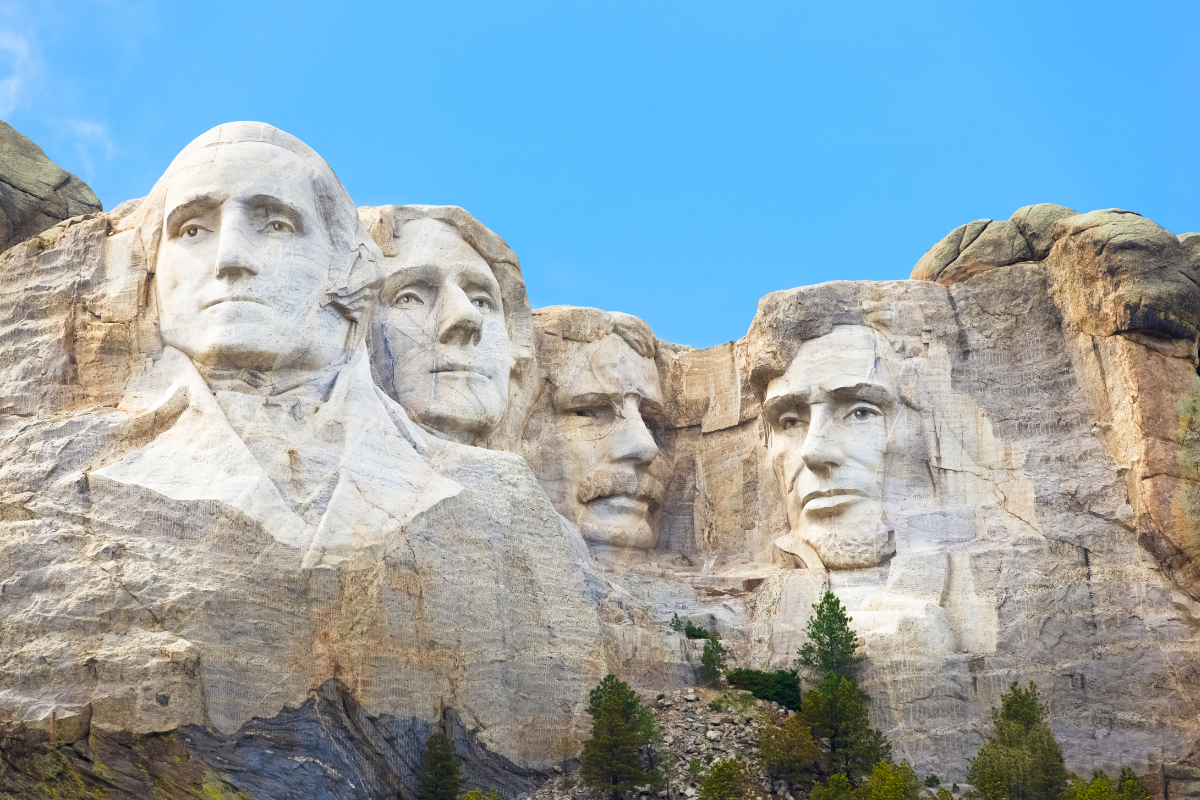
Who are the Presidents on the U.S. Bills?
Each bill in your purse tells a story of American history and the individuals who shaped it. The faces on every U.S. bill in circulation include five American presidents and two founding fathers:
- $1 Bill, George Washington, a Founding Father and the first U.S. President
- $2 Bill, Thomas Jefferson, a Founding Father and the third U.S. President
- $5 Bill, Abraham Lincoln, the 16th president
- $10 Bill, Alexander Hamilton, Founding Father
- $20 Bill, Andrew Jackson, the seventh president
- $50 Bill, Ulysses S. Grant, a Union general and 18th president
- $100 Bill, Benjamin Franklin, a Founding Father and inventor
The faces on larger denominations that are out of circulation—the $500, $1,000, $5,000, $10,000, and $100,000 bills—are also those who served as president and Treasury secretary.
- $500 Bill, William McKinley, the 25th president
- $1,000 Bill, Grover Cleveland, the 22nd and 24th president
- $5,000 Bill, James Madison, the fourth president
- $10,000 Bill, Salmon P. Chase, Lincoln’s Treasury secretary
- $100,000 Bill, Woodrow Wilson, the 28th president
Who gets to be on money? Well, it’s kind of mysterious, with only one known criterion: the individuals must be well-known in American history. The final decision then rests with the secretary of the Department of Treasury. However, one rule is clear: no one who’s still alive can appear on U.S. currency, according to federal law.

Presidents’ Day Math Fun Activities
Now that we’ve learned about the Presidents’ Day, let’s have some fun with math! Download the printable worksheets below designed by our Spark Math teachers to test your child’s math skills while learning about Presidents’ Day.
1. Coin Sorting
Sort by presidents:
- Gather a collection of coins. Then, separate the coins based on the presidents depicted on them. For example, group all coins with Abraham Lincoln’s portrait together.
- Write down the name of each president next to their respective coin group.
Sort by type (pennies, nickels, dimes, quarters, half-dollars, dollar coin):
- Organize the coins into different categories based on their type, such as pennies, nickels, dimes, quarters, half-dollars, and dollar coins.
- Label each group with the type of coin it contains.
Sort by year of release:
- Arrange the coins in order of the year they were released.
- Write down the release year of each coin next to its group.
2. Coin Graphing
Graph how many you have of each coin
- Count the number of coins in each category (e.g., pennies, nickels, etc.).
- Use a bar graph to represent the number of each type of coin. Then, label the x-axis with the types of coins and the y-axis with the number of coins.
Toss coin and graph results of heads or tails
- Toss a coin multiple times and record whether it lands on heads or tails each time.
- Create a tally chart to keep track of the number of heads and tails.
- Use a pie chart to graphically represent the percentage of heads and tails outcomes.
Remember:
Have fun while sorting and graphing your coins! Always double-check your work to ensure accuracy in sorting and graphing.
Create Your Own Challenge:
Design your own coin sorting or graphing challenge. Think of a creative way to categorize or represent your coins, then share it with your family or friends!
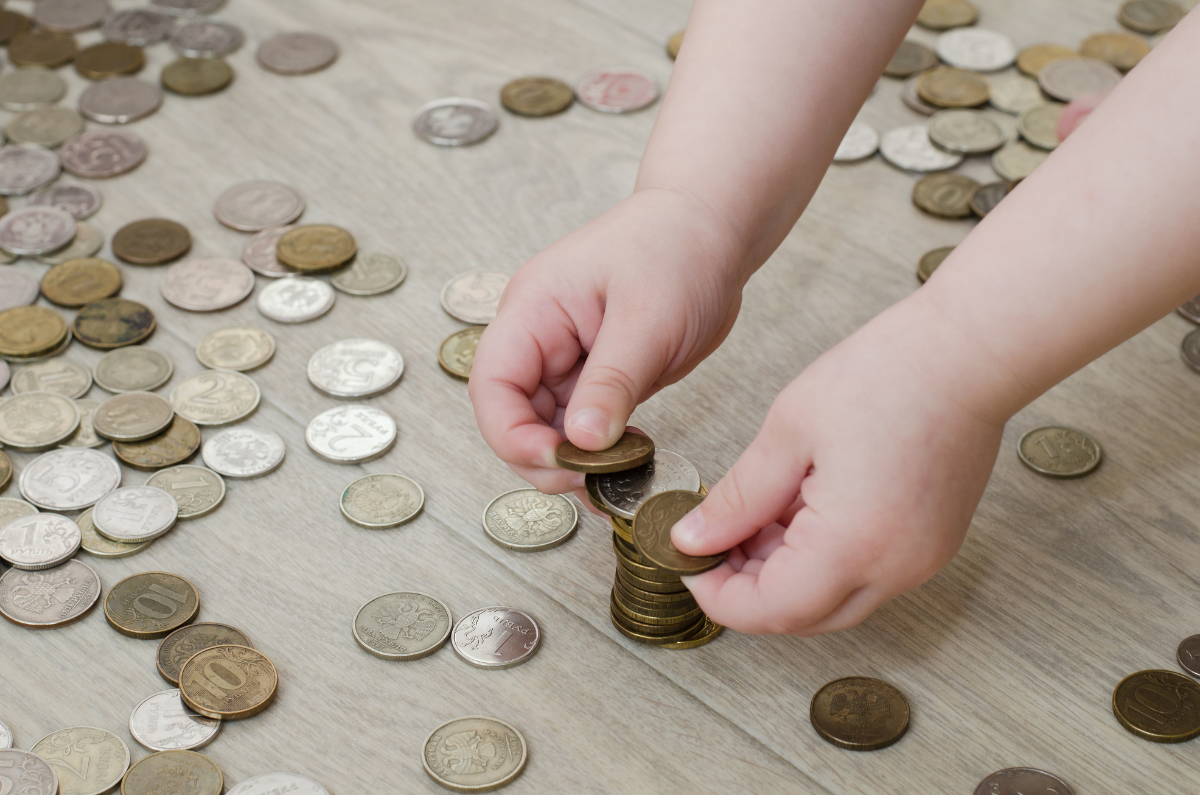
3. Dice to Race for $1
Gather your family or friends for this exciting game for two or more players!
What You Need:
- Two dice
- A $1 bill
- Lots of coins (around 25-30 pennies, 5-10 nickels, 5-10 dimes, and 2-3 quarters)
How to Play:
- Start by setting aside the $1 bill and putting all the coins in a pile.
- Each player takes turns rolling the dice.
- The sum of the dice roll tells you how many coins you can take from the pile.
- You can also choose to exchange some of your coins during your turn. For example, you can trade 10 pennies for 1 dime, or 2 dimes and 1 nickel for a quarter.
- After your turn, pass the dice to the next player and let them take their turn.
- Keep playing until one player has enough coins to exchange for the $1 bill.
Remember:
You can only exchange coins when it’s your turn. Make sure you agree with what the other players do during the game. Lastly, have fun and enjoy the friendly competition!
Create Your Own Challenge:
To make the game more challenging, introduce additional rules or restrictions, such as limiting the number of exchanges per turn or adding a time limit for making decisions.
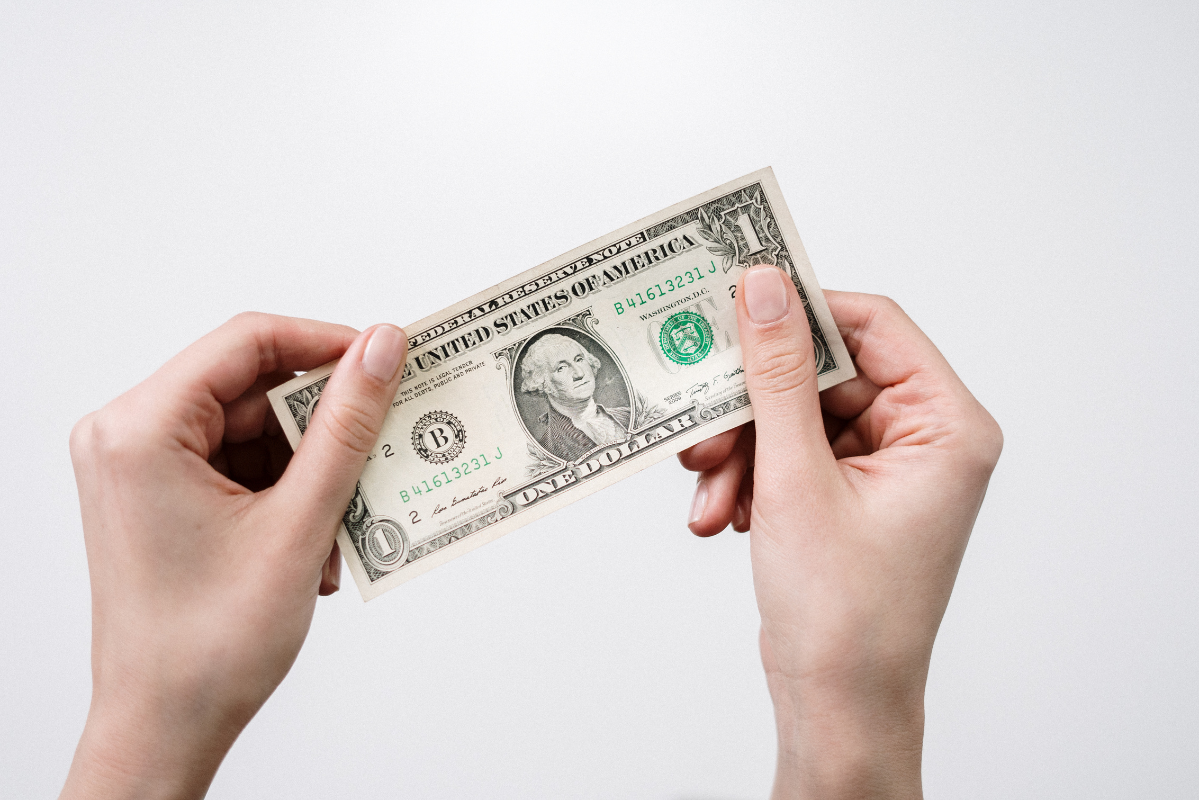
Presidents’ Day Math Fun Worksheets
1. Math Detectives: Add, Then Decode the Riddle
Solve the addition problems, then use the alphabet code to answer the riddle.
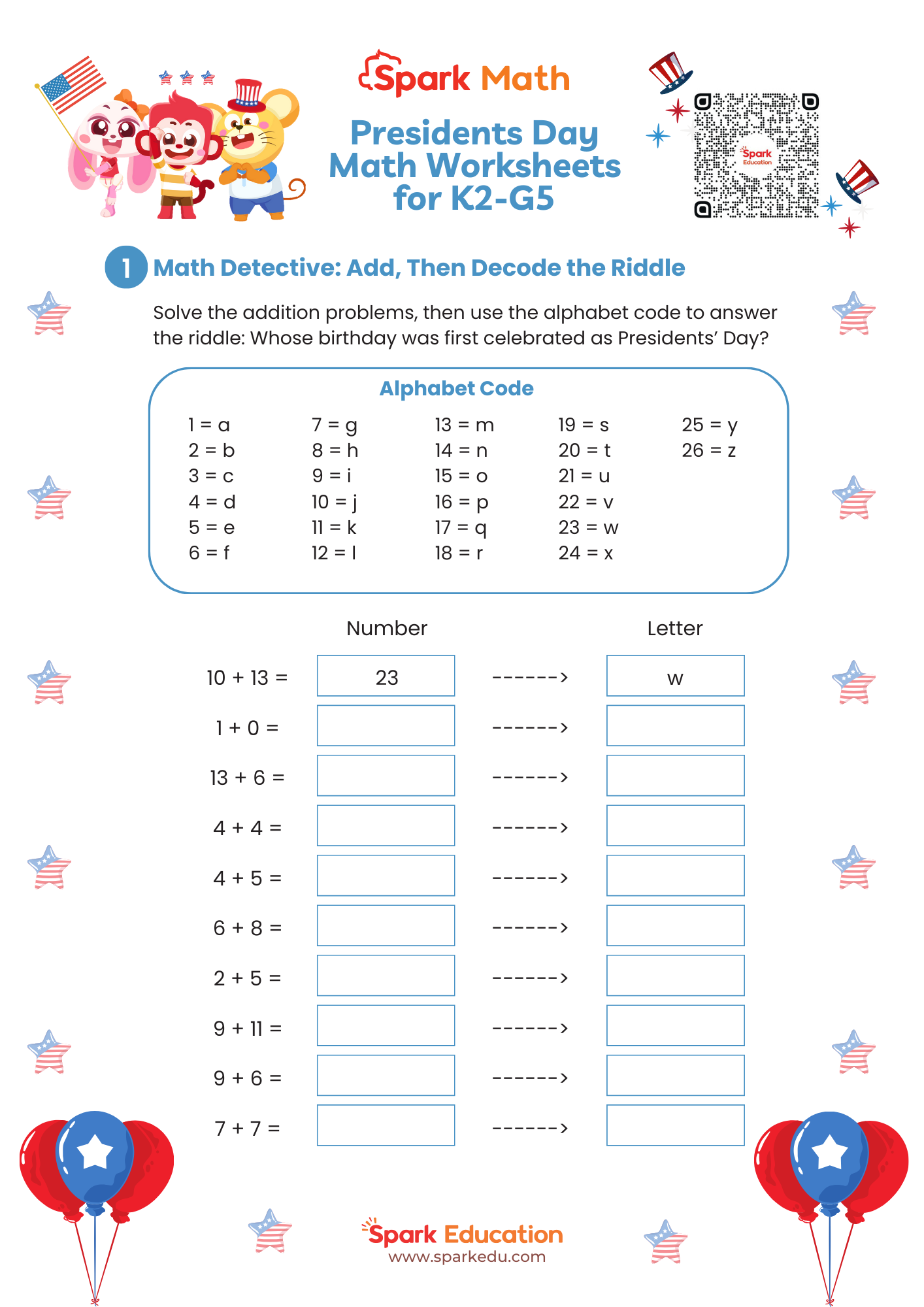
2. Who is on the U.S. Bills?
Draw a line to match the dollar bill, face value, and the name of the American president.
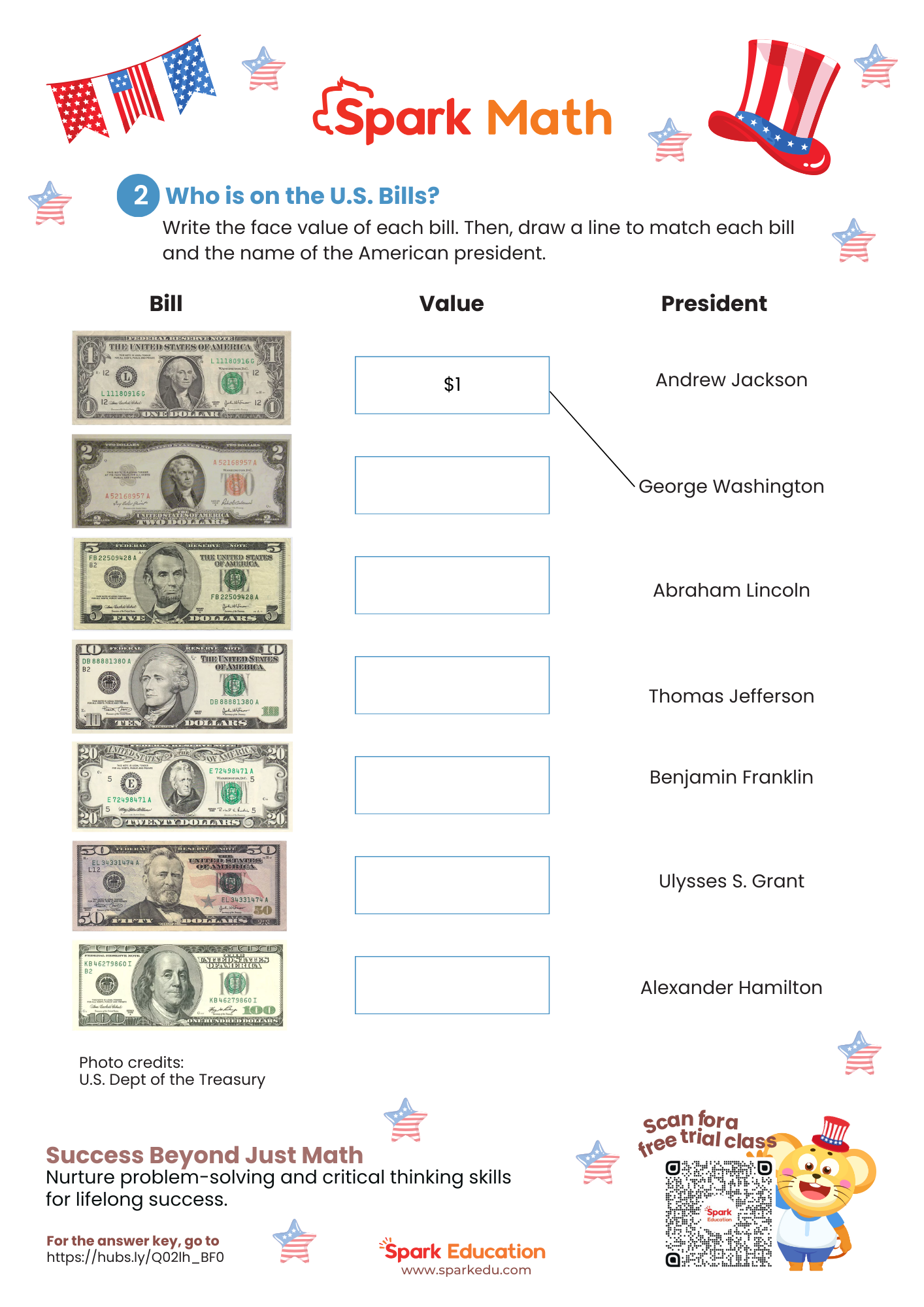
Answers
- Whose birthday is first celebrated as the Presidents’ Day? George Washington
- Who is on the U.S. Bills? $1 Bill – George Washington $2 Bill – Thomas Jefferson $5 Bill – Abraham Lincoln $10 Bill – Alexander Hamilton $20 Bill – Andrew Jackson $50 Bill – Ulysses S. Grant $100 Bill – Benjamin Franklin
Spark Math helps kids become math masters!
Spark Math by Spark Education is the perfect way to help kids get a better understanding of math skills and vocabulary to become math aces. Our online supplemental math program is a fun and effective way for kids to learn math. Our experienced real-time teachers change boring math lessons into exciting math adventures with gamified learning and captivating animations. With interactive pod-sized classes of 6 or fewer, kids get the attention and support they need to understand even the hardest concepts. Try it for yourself by signing up for a free trial today!




